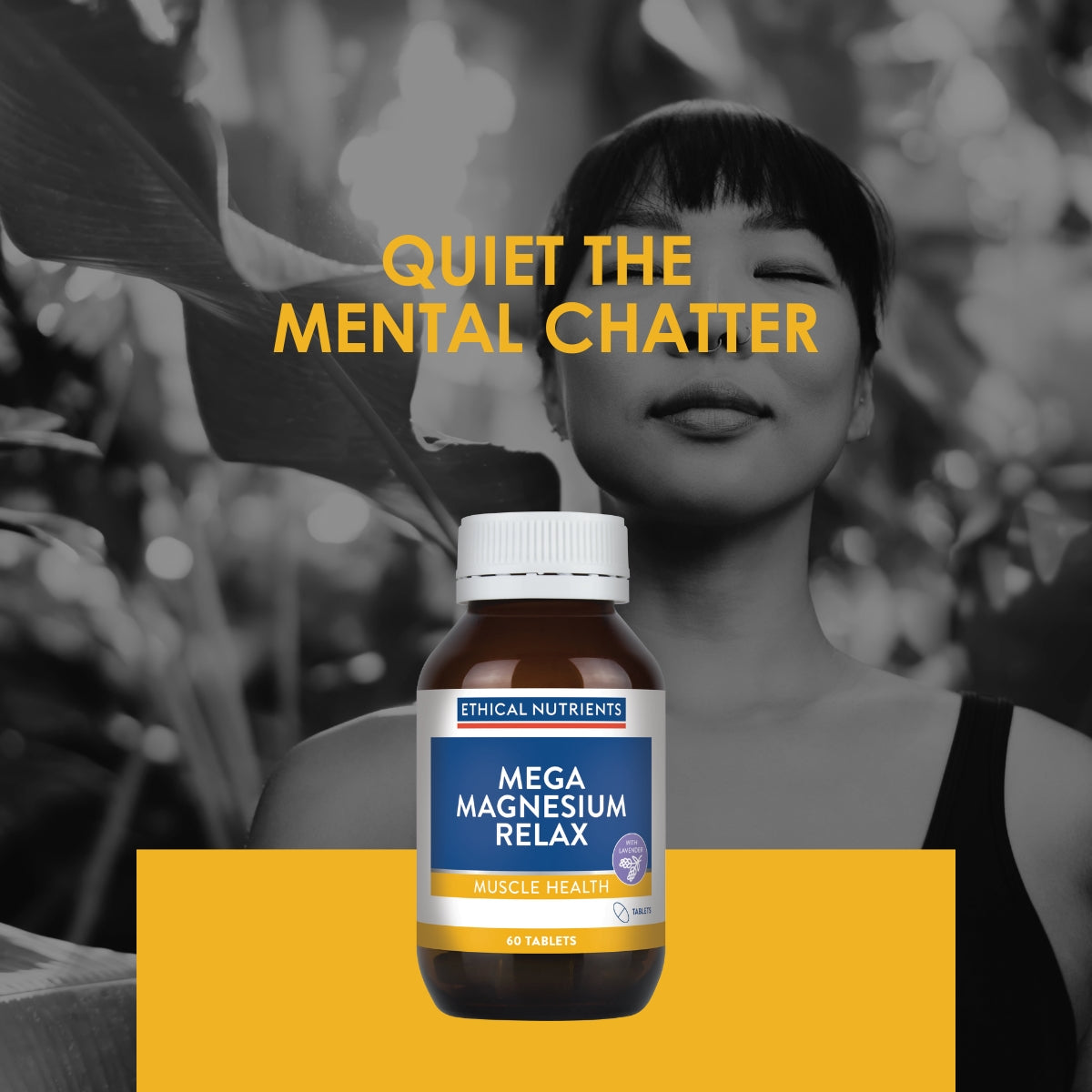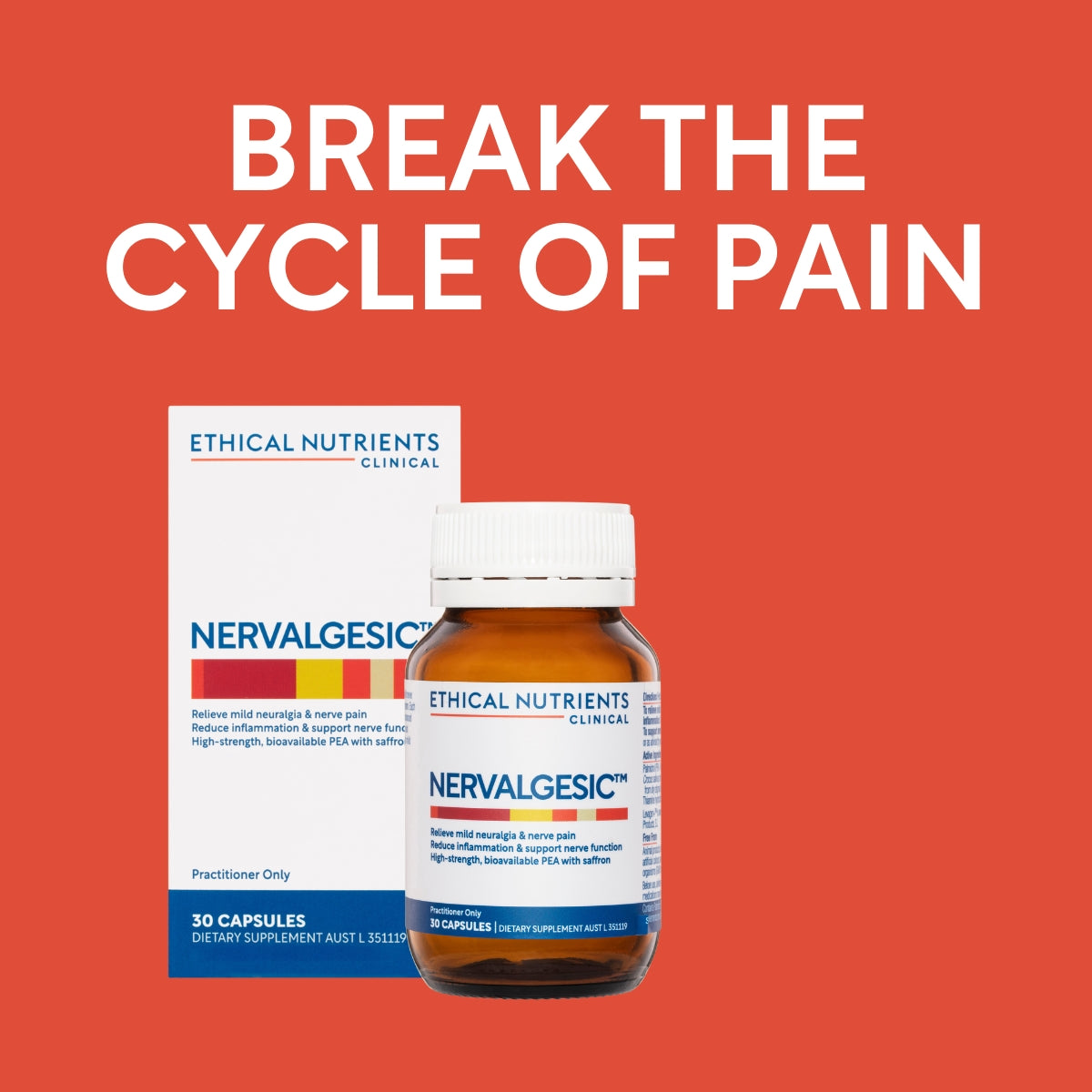
What is Nerve Pain and How Does it Differ to Regular Pain?
Pain is an important sensation that alerts your brain to danger, so you can try to avoid further harm (ie. when you touch a hot oven, you feel pain in your fingertips, which triggers you to remove your hand and avoid further burns).
In people with nerve pain, the messaging system between your brain and the affected body part isn’t working properly. This is usually due to prior damage, an injury or a medical condition. Effectively, the brain receives wayward signals where you feel real pain in the form of tingling and numbness, or a burning, shooting or stabbing sensation despite there being no obvious pain-inducing event. Unfortunately, in people with nerve damage, pain can flare up at any time unprompted. To make matters worse, prolonged nerve pain and associated inflammation can also make the nervous system more sensitive to pain, which leads to a vicious cycle (see figure 1 below). This can in turn mean that pain may result from something that isn’t normally painful (ie. a bed sheet brushing against the skin).
Figure 1: The Cycle of Pain

What is PEA?
Palmitoylethanolamide (PEA) is a fat-soluble molecule produced naturally by humans, animals and some plants2. It is produced on demand when pain or inflammation arise in your body, working to reduce levels and bring your body back into balance. The irony is that some medical conditions and those people struggling with ongoing inflammation and nerve pain, natural production of PEA is hindered as the body gets confused about and tired of producing the molecule.
How PEA Breaks the Cycle of Pain
The physiology of pain is complex and involves many processes involving the immune system (for inflammatory response) & brain (for pain receptors & amplification). After an initial pain trigger (damage, injury or medical condition), inflammation flares and subsequent mild nerve pain occurs. From here, these pain sensations are further triggered within the brain (particularly in those suffering with ongoing nerve pain), which leads to a sense of amplified pain sensations. This further triggers the inflammatory process and the pain cycle continues.
PEA is a cutting-edge ingredient that relieves mild nerve pain and inflammation, by targeting each stage of the pain cycle and disrupting the pain amplification therein. This means that it not only relieves the inflammation and pain, but also breaks the vicious cycle caused by the amplification (see figure 2 below).
Figure 2: Breaking the Cycle of Pain

Where Can I Find PEA?
PEA is relatively new to Australia and until recently, has only been available in compounding form through prescription. Ethical Nutrients have launched the NEW Ethical Nutrients Clinical range, which offers new approaches to Women’s Health, Pain Management, and Immune Health. For targeted relief of mild nerve pain & neuralgia, check out Nervalgesic. For relief from neuromuscular pain (involving both nerves & muscles), take a look at Nervalgesic Muscle. Alternatively, you can speak with your local Pharmacist for more information about this ground-breaking new ingredient, and advice on how it may fit in with your pain management plan.
References
1 Henderson J, Pollack AJ, Pan Y, Miller GC. Neuropathic and non-neuropathic chronic pain at GP encounters: Prevalence, patient characteristics, suffering and pregabalin use. Aust Fam Physician. 2016 Nov;45(11):783-786. PubMed PMID: 27806445.
2 Peritore AF, Siracusa R, Crupi R, Cuzzocrea S. Therapeutic efficacy of palmitoylethanolamide and its new formulations in synergy with different antioxidant molecules present in diets. Nutrients. 2019 Sep 11;11(9).e2175. doi: 10.3390/nu11092175.






